
Cape Town: In Which We Appreciate Chocolate
This portion of our trip was ‘sponsored’ by Susan and Terry Akers. Thanks for everything, guys!
After exploring the area south of the city and heading east to wine country, mom, Terry, Danielle and I headed to Cape Town where we had rented a nice two bedroom high-rise condo smack in the middle of town (Thanks Airbnb!). We had three days to explore the city proper, so there was a lot to do and not a lot of time to do it in! Prior to arriving in South Africa, we were told that if you get good enough weather to head to Table Mountain, drop your plans and go because it may be your only chance. With that advice in our minds, we woke up on our first day in the city to a nice, sunny day and headed straight to Table Mountain.
Danielle was feeling a bit run-down and doesn’t much care for hiking to begin with, so she opted to stay behind and get some rest. It took only about 10 minutes to reach the parking area from our condo, but by the time we arrived, clouds were starting to form and intermittently blow up and over the top of the mountain. Luckily they were not so bad that the mountain was closed, so the three of us piled into the cable car and headed up to the summit. The views from the cable car are supposed to be stunning, some of the best views of the city. Unfortunately, this is all we saw:
As we reached the top, we found that the clouds were coming by every five minutes or so, so we’d get five minutes of magnificent views and sunshine, followed by five minutes of being, well, inside a cloud. It was kind of surreal and I am really glad we had that kind of weather as opposed to a plain-old sunny day that would have been boring. We walked around the western rim of the mountain and took about 47,000 photos as we did so, and then I talked mom and Terry into hiking across the entire thing to Maclear’s Beacon, the highest point on the mountain.
After hiking for about 30 minutes, we reached a gorge that was about 50 feet deep into which some steep stone steps had been carved. In order to reach Maclear’s Beacon, we had to descend the steps, cross the gorge, and then head up the other side. The steps were wet and slippery due to the “cloud-every-five-minutes” weather, so Terry and mom opted to stay behind and hike the main plateau, leaving me to hike onward on my own. The rest of the hike was eerie and awesome. The passing clouds made visibility poor, and at times it seemed like I was walking through a swamp or crossing some part of Scotland. I also didn’t encounter a single other person for the 20 minute walk to the Beacon, and the feeling of being isolated in nature was awesome, something I have really missed since I haven’t been able to go running.
The Beacon itself is underwhelming. You arrive at it suddenly after crossing a wide flat area and then hopping over a series of small boulders and undulating rocks that have been worn away by erosion. There’s a quick 30 foot rise to reach the area of the Beacon, and the Beacon is a huge pile of rocks, maybe 15 feet high, which you can stand on. On any other day the view is probably breathtaking, but on this day, it was just misty. Nevertheless, I enjoyed being there and as I was getting ready to leave, another group of hikers arrived and offered to take my picture, which I appreciated.
After the 50 minute walk back to the cable car station, I reunited with mom and Terry who had hiked the entire circumference of the main plateau and had just finished themselves. Satisfied with our respective hikes, we got back in the cable car and headed back toward sea level. On the way down, we got some of the views we had missed on the way up.
We had an early dinner that night at Mama Africa, a popular restaurant that is known for its (you guessed it) pan-African cuisine. Danielle and I ate all kinds of game: crocodile, ostrich, springbok, gemsbock, and kudu, with mom and Terry trying some of it but not all of it. As a main course, I had a traditional Zimbabwean dish called dovi, which is a kind of chicken stew. It was awesome – definitely one of the best meals I’ve had on the trip so far.
We had eaten dinner early because we had evening reservations for a “Chocolate Appreciation” course run by Lindt. We had booked it several weeks earlier without really knowing what we would do – I mean, the thing was called “Chocolate Appreciation” so we were pretty sure we’d like it no matter what. We turned up at the Lindt store about fifteen minutes early and wandered through the small, upscale, outdoor shopping center while waiting for our course to start. We we were called in, the staff led us into the back room of the store which was a large kitchen with granite-topped tables, lots of shiny equipment, and elaborately constructed castles and decorations everywhere. We would later learn that all of the castles and decorations were made of chocolate. Of course. Oh, and there was a big spigot coming out of the wall, sewing an endless stream of melted chocolate into a pool below it, kind of like a water feature, but chocolate.
Once we took our seats, the staff led us through an hour-long course about Lindt’s history, the history of chocolate, and the process of making chocolate. In front of us, on the table, were seven different kinds of chocolate, plus a raw cacao bean and a spoonful of cacao nibs. The staff led us through a tasting of the chocolate, the bean, and the nibs, starting with the most bitter stuff and moving to the sweeter stuff. We learned a lot and really enjoyed ourselves. When it was over, we were each given three pieces of chocolate on a stick (the same chocolate that’s in the center of the red Lindt chocolates), which were dipped into the melted chocolate from the aforementioned spigot and then we got to “decorate” them with various toppings and take them home with us. They didn’t last long.
The next day was taken up almost entirely by our tour of Robben Island, a small island off the coast of Cape Town that once housed a prison where many political prisoners were held during Apartheid, including Nelson Mandela. The prison is now a museum, and the tour guides are all former political prisoners which gives you special insight and a human context for what went on there for over 30 years. In the morning, mom and Terry went on the same tour of Langa Township that we had gone on a week before, on our recommendation. In the afternoon, Terry headed home to get some rest and mom met Danielle and me at the waterfront for our 1pm tour of Robben Island.
Things got off to a bad start, though. Arriving several hours early to buy tickets, Danielle and I were saddened to learn that all of the tours for the rest of the day were sold out. We had been told that the tours typically don’t sell out in advance during winter, but that was apparently not true. Dejected and with no way to reach mom to let her know, we sat at a café near the Robben Island ticket stand and waited for mom to arrive.
Thankfully, when she arrived, she was being escorted by Chippa, of the Langa Township Tour and Happy Feet, who wanted to make sure she found her way to us without getting lost. When we told them about the ticket situation, Chippa sprang into action: “Wait here. I’m going to try something.” He disappeared into the ticketing office, and we waited. While we were waiting and chatting, another tourist overheard us and came up offering to sell us one of their tickets – one of the people in their group wasn’t feeling well and couldn’t take the tour after all, so they sold us her ticket at face value. One down, two to go.
Danielle went inside to tell Chippa that we now only needed two tickets, and after she got her point across, he shooed her away and kept chatting in his native language with the staff behind the ticket window. Realizing he may be successful and that I didn’t have any cash on me to pay for the tickets anyway, I ran to an ATM and grabbed some money in case Chippa had worked his magic. When I returned, Chippa was engaged in conversation with mom and Danielle, with a serious look on his face. Crap.
I walked up and asked what was going on, and he said “Well, I have bad news…. (dramatic pause) …you need to run because I got you tickets and the boat leaves for the island in two minutes.” After heaping thanks on him and paying him back for the tickets, we excitedly ran down to the dock and minutes later we were on the ferry, cruising to Robben Island. Chippa had saved the day.
The tour of the island was short, maybe an hour, but it was powerful. We listened as our guide described the conditions: forced labor was mandatory. A limestone quarry was built and prisoners were required to mine the blindingly-white rock with small tools in the bright sun all day long for months at a time. Many had permanent eye damage from the light, some went blind. The rocks they mined were then brought into the prison, where they were required to break them into smaller rocks. Finally, the rocks were discarded.
Food was doled out by race – “Indians” (people of Asian descent) were given the most food (though still not enough), “colored” people (mixed race) were given less, and “blacks” were given the least, notably not even bread at times. For many years, there were no beds – prisoners were required to sleep on small mats on the concrete floors. Thanks to Amnesty International and hunger strikes on the part of the prisoners, beds were eventually provided, but years of sleeping on hard concrete had already taken its toll on many. Visitors were allowed once every six months, but the only languages allowed during visits were English and Afrikaans. If you or your visitors couldn’t speak one of those languages, you just sat there and stared at each other. No physical contact was allowed. And remember – these men were political prisoners, imprisoned by and large for breaking only civil laws that upheld the illegitimate Apartheid regime, or for merely organizing our speaking out against that regime. Trials? Ha. Evidence? Nope.
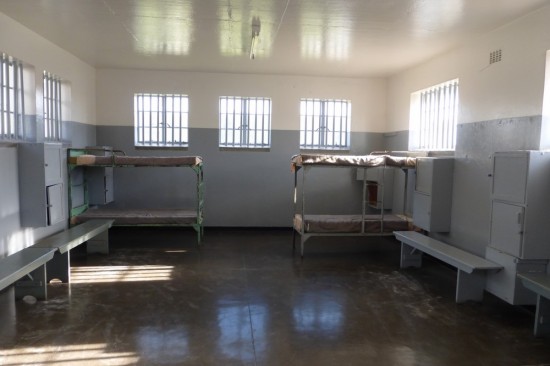
The communal cell area where 40+ prisoners slept on the concrete floor. The beds were added in the late 1970s.
The tour was moving and poignant, and left us noticeably depressed. We headed back to the mainland, mostly in silence, and met back up with Terry at our apartment. Since it was our last night in Cape Town, we decided to do something fun to lift our spirits a little – we hit up a jazz club. But this is not just any Jazz club, it’s The Crypt – in the basement of St. George’s Cathedral, former home of Archbishop Desmond Tutu (who had just given a sermon there the prior week). We had a nice “meat and potatoes” dinner, followed by a couple cheese trays and plenty of wine and whiskey while we listened to a pretty good local act for a few hours. After their first two sets, we ducked out at around 10:30, all of us absolutely beat and ready for some sleep.
The next couple of days would be mom and Terry’s last in South Africa, and we planned to make the most of it, safari style. Next Stop: Inverdoorn Game Reserve
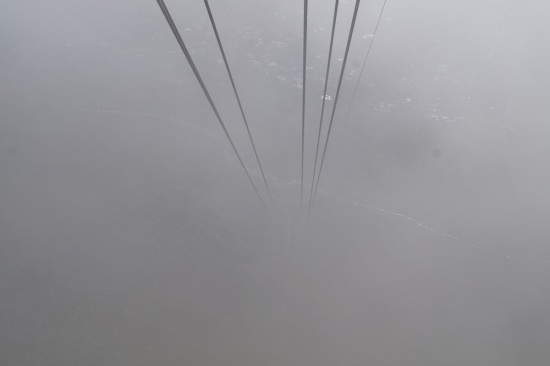

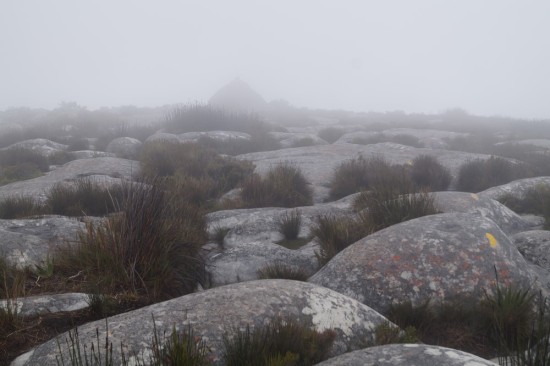
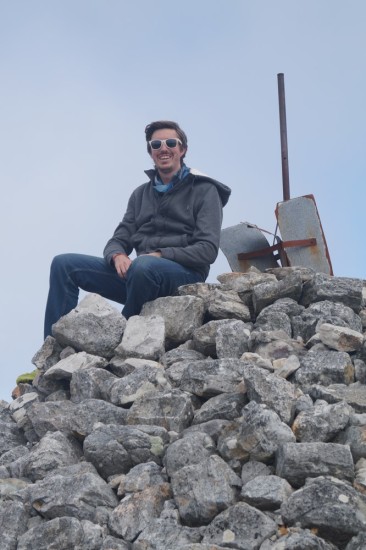
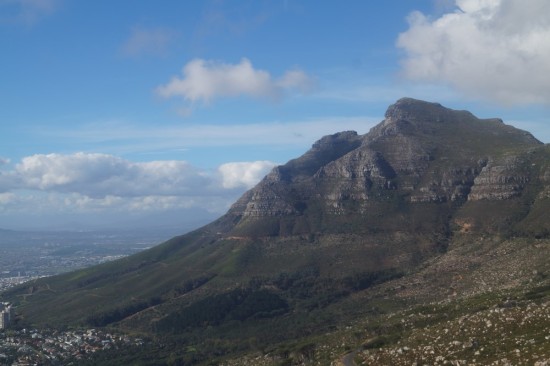

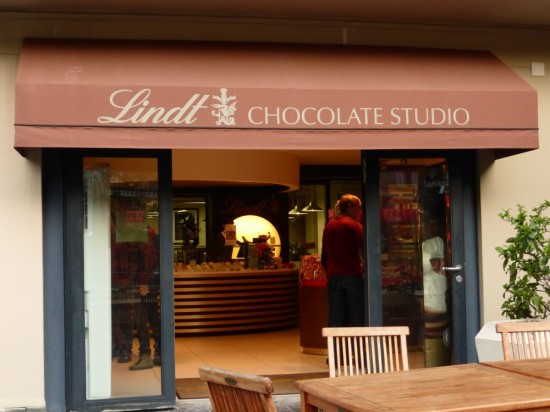
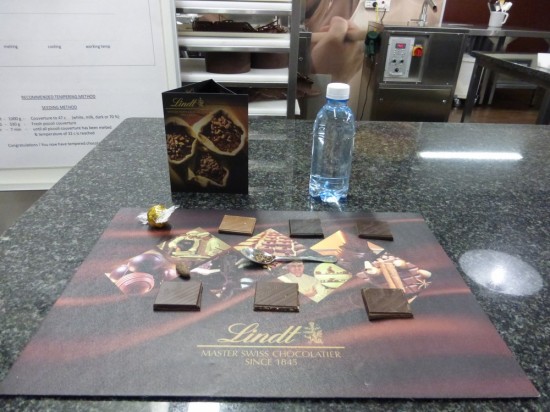



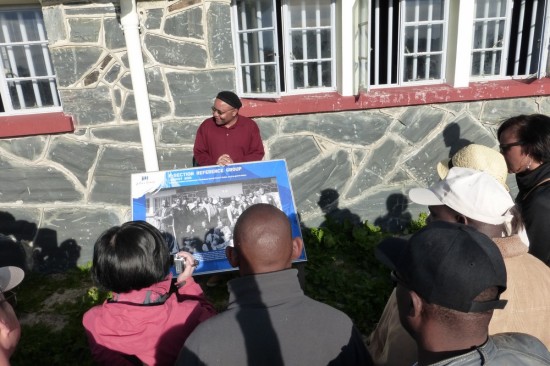
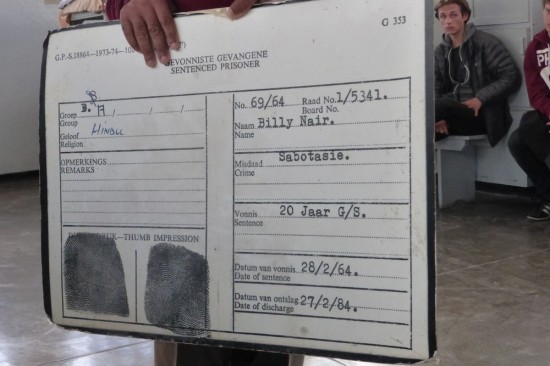
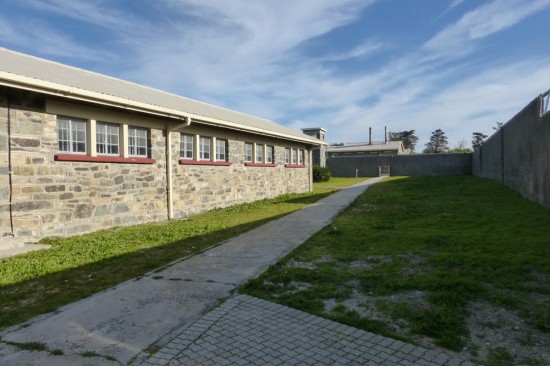
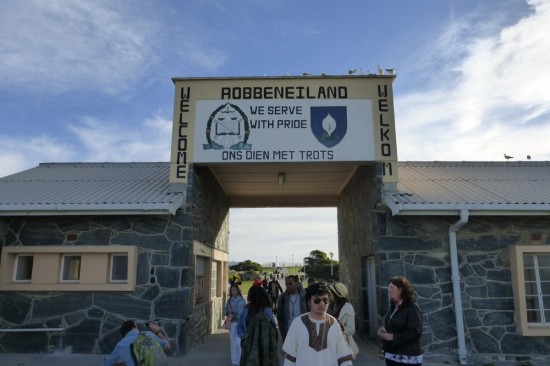

[…] having an amazing time in, around, and outside of Cape Town, mom, Terry, Danielle and I headed 3 hours outside the city to […]
[…] Nearly drunk from our tasting, mom and I stumbled back to the car and we headed back to Cape Town for the final leg of our family adventure. Next up: Cape Town: In Which We Appreciate Chocolate […]